As global temperatures continue to rise due to climate change, and energy costs surge in many parts of the world, the need for cost-effective and energy-efficient cooling solutions has never been more urgent. In both residential and commercial sectors, consumers are actively seeking alternatives to conventional air conditioning systems, which are often expensive to purchase, costly to operate, and place a heavy burden on electricity grids.
Air coolers — particularly evaporative coolers — have quickly gained popularity as a viable solution. These devices offer a more eco-friendly and economical approach to cooling, using significantly less electricity compared to traditional AC units. Their relatively simple design, low maintenance requirements, and portability make them ideal for use in areas with limited infrastructure, unstable power supply, or high electricity tariffs.
In regions with hot and dry climates, Pendingin udara are especially effective, as they not only lower indoor temperatures but also add humidity to the air, enhancing comfort. Moreover, as more consumers become environmentally conscious, the appeal of non-refrigerant-based cooling systems like evaporative air coolers continues to grow.
Given these trends, launching an air cooler business in 2025 represents a timely and profitable opportunity for entrepreneurs. The market potential spans multiple demographics — from urban households and small businesses to factories, schools, and even outdoor events. With a strategic product offering, competitive pricing, and a focus on energy efficiency, new businesses can position themselves as key players in this expanding market.
Understanding the Air Cooler Industry

Global Market Size and Growth
The global air cooler industry has experienced consistent and robust growth over the past decade, driven by both environmental and economic factors. According to recent market research reports, the global air cooler market size was valued at approximately USD 26.80 billion in 2025. Melihat ke depan, it is projected to grow steadily, reaching around USD 43.47 billion by 2034, with a compound annual growth rate (CAGR) dari 5.52% during the forecast period (2025–2034).
This upward trend highlights a strong and sustained consumer preference for cost-effective and energy-efficient cooling solutions. As more regions face rising temperatures and energy challenges, air coolers are increasingly being viewed as a practical alternative to traditional air conditioning systems, especially in emerging markets.
Key Market Drivers
Several key factors are contributing to the expanding demand for air coolers across the globe:
- Climate Change and Rising Temperatures
One of the most significant drivers is the global rise in average temperatures due to climate change. Heatwaves are becoming more frequent and intense in various parts of the world, especially in Asia, Africa, and parts of North America. This has led to a surge in demand for residential and commercial cooling solutions. Air coolers offer an affordable and energy-efficient response to the growing need for thermal comfort in both urban and rural areas.
- Focus on Energy Efficiency and Sustainability
As energy consumption becomes a growing concern worldwide, air coolers stand out for their low power consumption compared to conventional air conditioners. They operate by evaporating water to cool the air, which significantly reduces electricity usage. This makes them especially appealing in countries where electricity costs are high or where the power supply is limited. Their eco-friendly nature aligns with global efforts to reduce carbon emissions and promote sustainable living.
- Affordability and Cost-Effectiveness
Air coolers are generally more affordable to purchase, install, and maintain than air conditioning units. Their lower operating costs make them accessible to a broader range of consumers, including middle- and low-income households. This affordability has been a critical factor in their popularity across developing regions.
- Rapid Urbanization and Compact Living Spaces
In many developing countries, rapid urbanization has led to an increase in smaller living spaces such as apartments and compact homes. Pendingin udara, with their portable and space-saving design, are well-suited to such environments. They are easy to move, require no permanent installation, and can efficiently cool specific rooms or areas, making them ideal for modern urban lifestyles.
- Government Incentives and Support for Energy-Efficient Products
In some regions, governments and regulatory bodies are encouraging the adoption of energy-efficient appliances through subsidies, tax rebates, and awareness campaigns. Pendingin udara, which fall into the category of energy-saving products, benefit from such initiatives, further boosting market growth.
Identifying Your Target Market
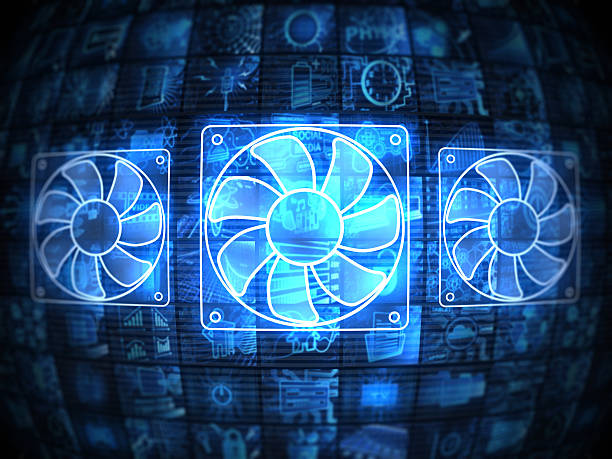
Urban vs. Semi-Urban Areas
Traditionally, urban areas have been the primary focus for cooling solution providers due to their dense populations, higher disposable income, and better access to modern infrastructure. Consumers in cities often seek efficient, kompak, and stylish air cooling solutions that fit into modern living spaces. These markets are typically well-served, but also highly competitive.
Namun, semi-urban and rural areas are rapidly emerging as high-potential markets for air coolers. These regions often experience high temperatures but lack the infrastructure and affordability required for central or split air conditioning systems. This gap creates a strong demand for cost-effective, energy-efficient alternatives—which makes evaporative air coolers particularly suitable.
Targeting semi-urban areas offers several strategic advantages:
- Lower market saturation
Fewer competitors, especially in branded or quality product segments.
- Growing awareness and aspirations
As consumers in these areas become more brand-conscious and comfort-oriented, their interest in modern appliances is increasing.
- Government development initiatives
Infrastructure and electrification improvements are making such regions more viable for appliance sales.
- Logistical feasibility
With the expansion of e-commerce and regional distributors, reaching semi-urban customers is now easier than before.
By creating marketing campaigns tailored to the specific needs and limitations of semi-urban consumers, businesses can tap into a growing yet underserved demographic.
Residential vs. Commercial Use
Your target market can also be segmented based on use cases, primarily categorized into residential and commercial applications:
- Residential Use
Homeowners, especially in regions with dry or moderately hot climates, prefer portable and compact air coolers that can be easily moved between rooms.
These units are ideal for bedrooms, ruang tamu, or small apartments where users are seeking relief from heat without the high cost of air conditioning.
Key features important to residential users include low noise levels, efisiensi energi, aesthetic design, and ease of maintenance.
- Commercial Use
Businesses such as restaurants, retail shops, cafes, gudang, bengkel, schools, and offices require larger-capacity air coolers to keep their spaces comfortable for customers and staff.
These environments often favor industrial-grade or tower air coolers that can handle larger spaces and extended operational hours.
For commercial buyers, durability, cooling capacity, efisiensi energi, and after-sales service are major considerations.
Some commercial establishments also look for customized cooling solutions to suit their interior layout or ventilation requirements.
Understanding these two key dimensions—geographical (urban vs. semi-urban) and functional (residential vs. komersial)—allows air cooler manufacturers and suppliers to position their air cooler products more effectively and fine-tune their marketing strategies to meet the specific demands of each customer segment.
Choosing the Right Business Model
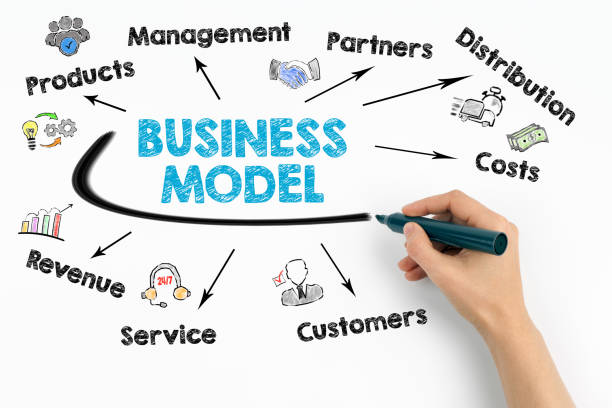
When entering the air cooler industry, it’s essential to determine the most suitable business model based on your available resources, long-term goals, and market strategy. There are generally three main models to consider: Manufacturing, Trading and Distribution, and a Hybrid Model that combines elements of both.
Manufacturing Model
Starting as a manufacturer means building or leasing production facilities, investing in machinery and tools, sourcing raw materials (such as cooler bodies, motors, and water pumps), hiring skilled labor, and managing the entire production process. This model allows you to:
- Maintain full control over product quality and design
- Develop your own brand with custom features
- Achieve higher profit margins by eliminating middlemen
Namun, it also comes with challenges, such as:
- High initial capital investment
- Complex operations management
- Need for technical knowledge and experience in production planning
This model is best suited for entrepreneurs or businesses with substantial funds and long-term visions focused on brand building and innovation.
Trading and Distribution Model
The trading model involves purchasing finished air coolers from existing manufacturers and reselling them through various channels, especially online marketplaces such as Alibaba, Amazon, or local e-commerce platforms. It offers several advantages:
- Lower startup costs since no production setup is needed
- Faster market entry and scalability
- Flexibility to offer a range of products from different suppliers
Namun, this approach has its limitations:
- Lower profit margins compared to manufacturing
- Less control over product quality and delivery times
- Dependence on third-party manufacturers
This model is ideal for startups, e-commerce entrepreneurs, or businesses looking to test the market before committing to manufacturing.
Hybrid Model
A hybrid model combines in-house manufacturing with trading and distribution activities. In this setup, a business might produce core products internally while sourcing complementary items from other manufacturers. This approach offers:
- Greater flexibility in meeting diverse customer needs
- Better control over critical product lines
- Opportunities to scale production while leveraging external supply chains
Although the hybrid model requires more coordination and resource management, it can be a powerful strategy for businesses aiming for growth while maintaining product quality and brand consistency.
Setting Up Manufacturing Operations

Infrastructure and Equipment
Launching a manufacturing operation involves significant initial investment in infrastructure. This includes securing suitable land, constructing factory buildings, and purchasing essential machinery and production equipment. In addition to these, reliable access to utilities such as electricity, water, and internet is critical for smooth operations.
The initial setup cost for a small- to medium-scale manufacturing unit typically ranges from ₹20 to ₹50 lakhs (approximately USD $25,000 ke $62,500). Namun, this amount can vary based on factors such as production capacity, automation level, and geographic location.
Raw Materials
The core materials required for production often include plastic housings, electric motors, bantalan pendingin, metal frames, and other components depending on the specific product. It is essential to source these materials from trusted and consistent suppliers to maintain product quality and ensure timely delivery. Building long-term partnerships with reputable vendors can also lead to cost savings and supply chain stability.
Labor Costs
Labor expenses constitute a major part of ongoing operational costs and vary by country and region. In India, for example, the monthly cost of labor for a small manufacturing team typically ranges between ₹1 lakh and ₹2 lakhs (approximately USD $1,250 ke $2,500). These figures may cover wages for assembly line workers, supervisors, Dan quality control staff.
In China, although the average labor cost is somewhat higher, the increased productivity and efficiency levels often balance out the expense. Selain itu, Chinese workers may have more experience with industrial equipment and automated systems, contributing to faster and more consistent output.
Product Development and Innovation
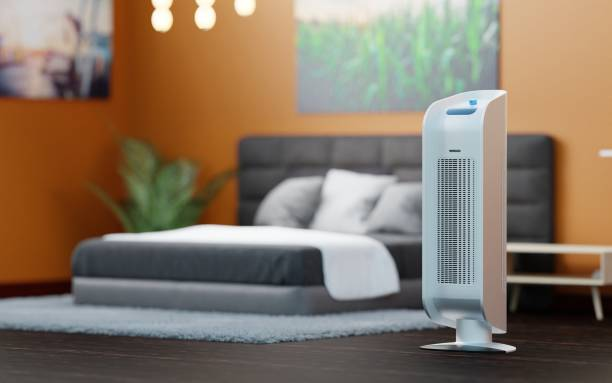
Jenis Pendingin Udara
Understanding the different types of air coolers is essential for meeting diverse customer needs and targeting the right market segments. Below are the main categories:
- Desert Coolers
These are large-capacity air coolers specifically designed for hot and arid regions. They use powerful fans and large water tanks to provide high air delivery, making them suitable for spacious rooms or semi-outdoor areas like garages and workshops.
- Tower Coolers
Known for their slim, vertical design, tower coolers offer a sleek and space-saving solution ideal for modern interiors. They are well-suited for living rooms, kamar tidur, and office spaces where both aesthetics and performance matter.
- Personal Coolers
Compact, lightweight, and highly portable, personal coolers are designed for individual use. They are ideal for small rooms, dorms, or for users looking for a cooling solution that can be easily moved around.
- Window Coolers
These coolers are mounted on windows and draw in fresh air from outside. They are effective for small to medium-sized rooms and help save floor space, making them a practical choice for apartments and compact homes.
Technological Advancements
In today’s competitive market, integrating advanced technology into your air coolers can significantly boost product appeal and customer satisfaction. Key innovations include:
- Remote Control Functionality
Allows users to operate the cooler from a distance, offering greater convenience and enhancing the user experience.
- IoT Connectivity
Smart air coolers connected via Wi-Fi or Bluetooth enable remote monitoring and control through mobile apps, aligning with the growing demand for smart home appliances.
- Energy-Efficient Components
Incorporating brushless DC motors, inverter technology, and eco-friendly cooling pads can lower energy consumption, reduce operational costs, and appeal to environmentally conscious consumers.
By investing in research and development (R&D), manufacturers can stay ahead of the curve by introducing innovative models that address changing consumer preferences, such as low-noise operation, air purification features, or multi-functional cooling systems. Continuous innovation not only enhances product value but also strengthens brand reputation in a dynamic market.
Establishing Supply Chain and Distribution
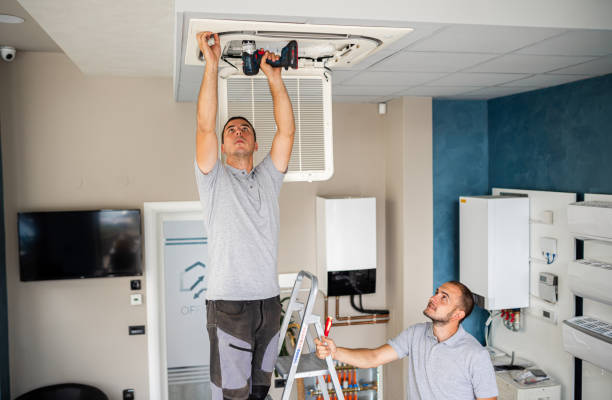
Sourcing Raw Materials and Components
A strong and efficient supply chain begins with securing high-quality raw materials and essential components required for manufacturing. This involves thorough research and evaluation to identify trustworthy and cost-effective suppliers. Building long-term relationships through contractual agreements not only ensures consistent supply and stable pricing but also helps maintain the desired product quality over time. It is also beneficial to diversify suppliers across regions to reduce dependency and minimize risk in case of disruptions.
Optimizing Distribution Channels
- Online Platforms
Leveraging the power of digital commerce is essential in today’s competitive landscape. Selling air coolers and related products through major e-commerce platforms such as Amazon, Flipkart, Alibaba, and JD.com can significantly broaden market reach. Selain itu, having your own branded online store provides greater control over branding, customer experience, and profit margins. Investing in SEO, digital advertising, and online customer support can further boost online sales performance.
- Retail Outlets and Local Distribution
Establishing partnerships with regional wholesalers, physical retail chains, and appliance showrooms can help you effectively penetrate semi-urban and rural markets, where internet access and e-commerce adoption may still be limited. These channels can also enhance customer trust by offering hands-on product experience and in-person support. Developing a localized distribution strategy with the help of sales agents or regional representatives can increase market share and brand recognition.
- Export and International Expansio
Exploring export opportunities can unlock new revenue streams and reduce over-reliance on the domestic market. Targeting regions with similar hot and dry climatic conditions—such as the Middle East, Southeast Asia, or parts of Africa—can create a natural demand for air cooling solutions. To succeed in international markets, ensure compliance with local regulations and certifications, adapt product designs to meet regional preferences, and consider working with local importers or trade agents.
By carefully building a reliable supply network and a multi-channel distribution strategy, you can position your business for sustainable growth and operational efficiency in both domestic and international markets.
Marketing and Branding Strategies
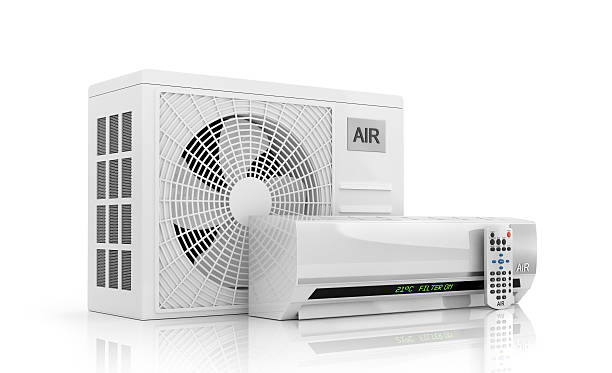
Building a Strong Brand Identity
Establishing a strong and recognizable brand is essential for standing out in a competitive market. This process starts with defining a unique value proposition—what makes your product different and better than others. Whether it’s energy efficiency, cost-effectiveness, or innovative design, these strengths should be clearly communicated to your audience.
Consistency is key: ensure that your brand messaging, tone of voice, and visual elements (such as logos, colors, and packaging) are aligned across all platforms. A cohesive brand identity builds trust, attracts loyal customers, and reinforces your brand’s image in the market.
Digital Marketing Strategies
- Social Media Marketing
Use platforms like Facebook, Instagram, and LinkedIn to connect with your target audience. Share product updates, customer testimonials, behind-the-scenes content, and industry news. Interactive content such as polls, giveaways, and Q&A sessions can boost engagement and brand visibility.
- Content Marketing
Publish blogs, instructional videos, and how-to tutorials that provide value to your audience. These materials not only educate your customers but also help position your brand as a knowledgeable and reliable expert in the industry. For example, you can create guides on how to use your product effectively, energy-saving tips, or industry trend analysis.
- Search Engine Optimization (SEO)
Optimize your website content with relevant keywords, meta descriptions, and internal links to improve your ranking on search engines like Google. A well-optimized site can drive organic traffic and attract customers who are actively searching for products like yours. Selain itu, improving page speed, mobile responsiveness, and user experience contributes to better SEO performance.
Offline Marketing Strategies
- Trade Shows and Industry Exhibitions
Participating in major industry events gives you the chance to showcase your products, connect with potential clients, and observe competitors. It’s also an excellent opportunity to gather feedback and expand your business network.
- Local Events and Sponsorships
Engaging in local fairs, community events, or sponsoring relevant initiatives can increase brand awareness and demonstrate your commitment to the community. These interactions create a positive image and foster trust among local consumers.
By combining online and offline marketing efforts, and maintaining a consistent brand presence across all channels, businesses can effectively attract, retain, and grow their customer base.
Kesimpulan
Starting an air cooler business in 2025 offers significant opportunities for growth and profitability. By understanding the industry dynamics, identifying target markets like semi-urban areas, choosing the right business model, and leveraging cooler trading online, entrepreneurs can establish a successful venture. Partnering with a reliable air cooler manufacturer and focusing on innovation, quality, and customer satisfaction will be key to long-term success.





















